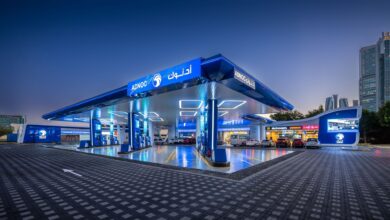
With 93% of companies in the MENA region recognizing sustainability as an important business objective, SAP is delivering improved carbon footprint management through modifying existing IT systems for its customers of all sizes and across all industries – Scott Russell, Executive Board Member, Customer Success, SAP

Executive Board Member
Customer Success, SAP
With COP 28 being hosted in Dubai this year and last year’s COP 27 being held in Egypt, the scene is set for the MENA region to demonstrate its commitment to sustainability principles and how its current focus on digital transformation can help to manage the region’s carbon footprint.
Fortunately, a new YouGov survey of companies in the MENA region commissioned by SAP has shown there is both a strong commitment towards sustainability and a willingness to invest in technology to achieve these goals across the MENA region. A total of 93% of companies surveyed viewed sustainability as an important business objective within their organization, with 47% saying it was vital to their success. Similarly, 94% viewed technology and innovation as important to achieve their sustainability goals.
Interestingly, companies also recognized the financial implications of sustainability policies, with more than 90% stating they expected their organization’s financial performance and sustainability strategy would be connected in the coming 12 months. SAP also sees another direct connection here, in that the same processes for managing financial transactions can be used effectively to measure and manage a company’s carbon footprint.
The challenge companies always face is how to measure carbon footprint across the entire value chain. Herein lies SAP’s opportunity to make a difference: 77% of financial transactions worldwide touch an SAP system, especially enterprise resource planning (ERP) systems. We want these ERPs to facilitate not only financial transactions, but also non-financial transactions. Because of our positioning, we have a responsibility to enable companies to manage their carbon footprint in the finest way possible. Carbon is an intangible element and many of our competitors base their calculations on the company’s financial balance sheet and convert these financial estimates into CO2. In SAP’s view, however, we need to start with product information and business processes that are stored in the ERP. To illustrate in simple terms why a financial conversion is ineffective, in the current inflationary context, a kilo of wood that used to cost the equivalent of, say, $10 will now cost twice as much. If you base carbon consumption on price, it doubles, and yet there is always one kilo of product.
How it works in practice – SAP’s four focus areas
SAP customers include large multinationals alongside small and medium-sized businesses and industries. Over the years, we have developed specialized verticals for our customers’ businesses – retail does not have the same needs as utilities. We therefore work closely with verticals to evolve our portfolio of solutions, according to their requirements, and have consequently developed concrete solutions around sustainability.
We modify our existing functionalities and solutions according to the new needs of our customers: for example, we facilitate the reporting of social indicators in our human resources systems, but we also co-create solutions to meet the new requirements of organizations.
At SAP, we are also focusing our efforts on four main areas: three at the operational level and one more focused on reporting. The first area concerns the management of the company’s impact on the planet, with solutions that enable us to better calculate the carbon footprint at the product level, but also on scope 3, which, unlike scopes 1 and 2, takes into account what happens within the company and its ecosystem: what it buys from its suppliers and what it sells. We therefore facilitate the feedback of information from suppliers via our historical purchasing solutions.
We are then working on a circular economy model, a model that is becoming more and more prevalent within companies. Before, it was a linear business where you had to extract, transform and throw away. Now, the idea is that everything we extract, produce or throw away has value. We are therefore facilitating this loop in companies and are currently working, for example, on the recyclability of plastics and packaging.
The last operational axis concerns the impact on the brand. We take into account the human resources aspect, but also a better evaluation of suppliers to ensure that they respect social criteria. Our solutions also allow us to improve efficiency and trust, and to reinforce sustainability by increasing the transparency of the supply chain.
Fourth, the ‘reporting’ part concerns the objectives that the company defines, both financial and non-financial, and which require daily management.
With the above approach, SAP is directly helping companies in MENA to achieve their sustainability objectives, including those they deem most pressing. The SAP-commissioned survey showed that addressing sustainability in supply chain was the main sustainability objective of companies (cited by 62%), closely followed by reducing waste (60%) and reducing emissions (53%).




